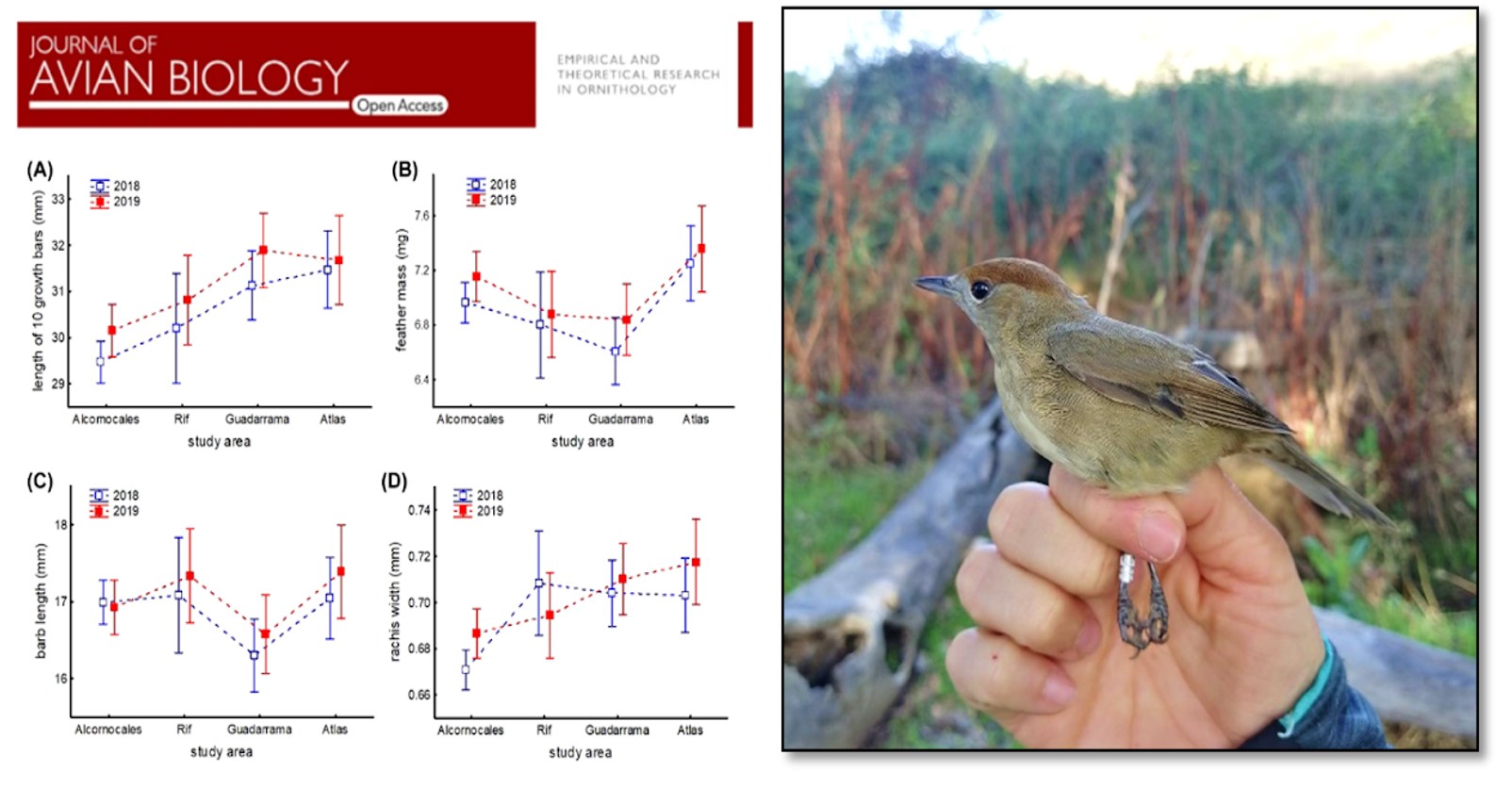Irene Hernández-Téllez, José I. Aguirre, Iván de la Hera, Alejandro Onrubia and José Luis Tellería
Feather traits in four southern populations of the Eurasian blackcap Sylvia atricapilla: do altitudinal movements explain the differences?
Journal of Avian Biology 2021
DOI: 10.1111/jav.02832
RESUMEN
Moult of birds is shaped by environmental and genetic drivers whose relative contribution to the structure of feathers may differ within and between populations. In this study, we compare some traits of tail feathers (growth bars, mass, rachis width and barb length) between four populations of the Eurasian blackcap Sylvia atricapilla breeding at different elevations within the southwestern Palaearctic. We tested if these traits were related to the primary productivity of habitats (a surrogate of food availability) or were better explained as an adaptation to altitudinal movements. The distribution of primary productivity was positively related to blackcap abundance suggesting that the species tracked the most productive areas to breed. In this environmental setting, wing morphology (wing length, concavity and pointedness) suggested that lowland blackcaps were sedentary while blackcaps from highland areas were involved in altitudinal movements. The feathers of blackcaps inhabiting the highlands showed wider growth bars and rachis than those of the most productive lowland areas but did not differ in feather mass and barb length. Fast feather growth has been related to time constraints to moult and wider rachis to improve flight efficiency in migratory birds. Our results therefore suggest that differences in feather characteristics between southern populations of the Eurasian blackcap are better interpreted as an adaptive response to altitudinal migration than as a consequence of regional food availability.
